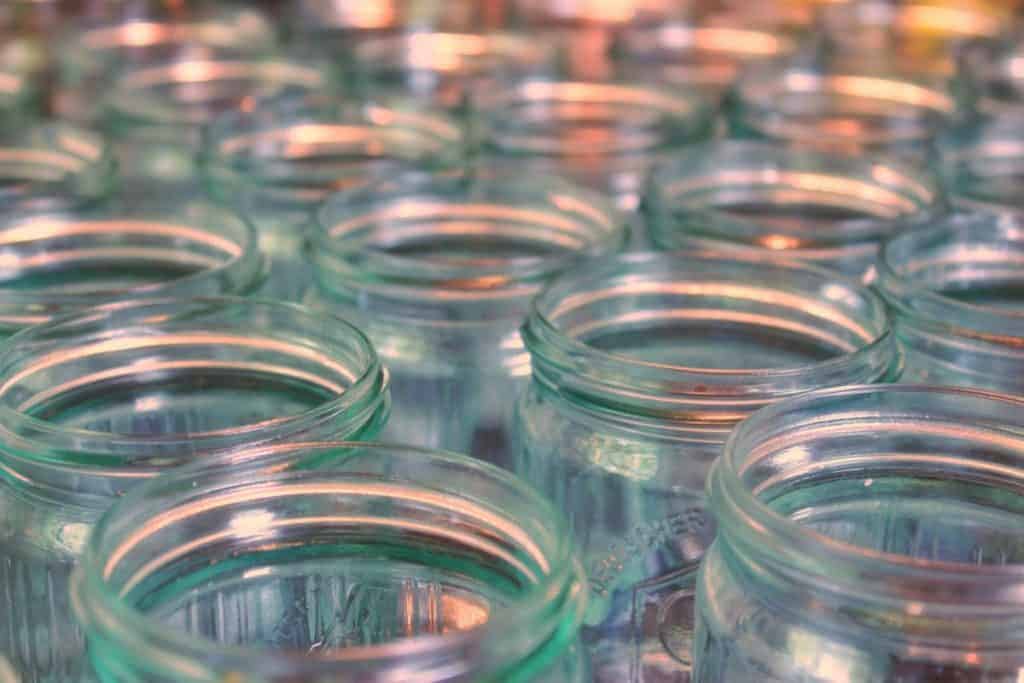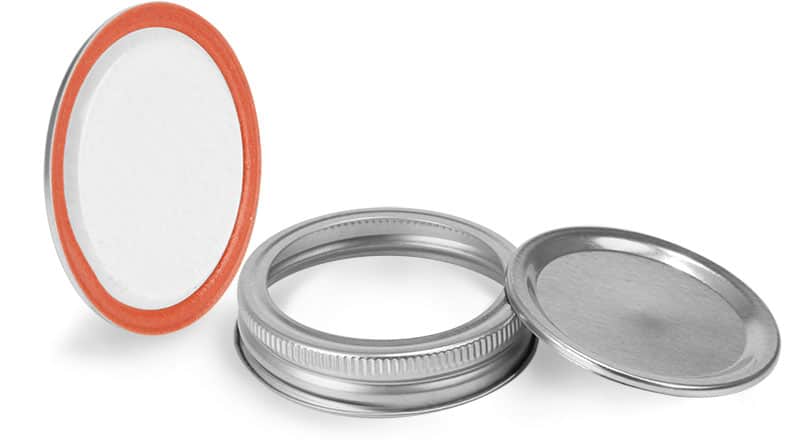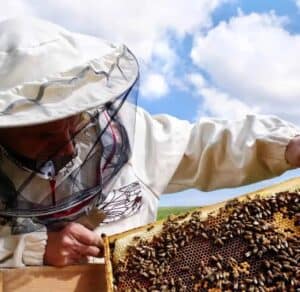How Long Should Honey Sit Before Bottling? Does It Need To Settle?
The honey bottling process is often debated amongst new and experienced beekeepers. But most beekeepers agree that you should give your honey time to settle after the extraction process. So, how long should your honey sit before you bottle it?
Extracted honey should be left for 24 to 48 hours to settle before beginning the bottling process. This allows the air bubbles and wax debris to float to the top and be removed by skimming or clingwrap. Leaving only the most attractive and clear honey for consumption.
Before you begin bottling your honey there is several important factors that you should consider. Are you going to use plastic or glass bottles, how are you going to skim and filter your honey, and how quickly does your honey crystalize? Let’s explore these factors and more to assist with your honey bottling.
How Long Should Honey Sit Before Bottling

Extracted honey forms small air bubbles during the extraction process. As the air bubbles rise to the top you will sometimes get small particles of wax rising with the bubbles. These bubbles form a layer of white foam on the top of honey.
The amount of time your honey needs to settle is also dependent on the temperature, extraction process, the type of filters used, and how quickly your honey may crystalize. Some honeys crystalize very quickly while others almost never crystalize.
How quickly honey crystalizes depends on your local nectar and the ratio of glucose to fructose. It is best to consult with local beekeepers regarding local nectars and crystallization timeframes.
Well filtered honey will only form foam on the top and can be easily skimmed or removed using clingwrap. Simply place the clingwrap tightly on the top of the honey and lift it off and the foam will come with it. This is a common method used by many beekeepers and is far easier and quicker than skimming.
Before you begin to bottle your honey, it is recommended to wait at least 24 to 48 hours after extraction. If its stored in a colder environment your honey may require several days longer for the air bubbles and debris to rise to the top.
If your honey is bottled with this white foam or air bubbles, called frosting in honey, it will appear at the top of the honey in the jar. But the white frosting will then spread down the inside of the jar and your honey will appear as white. The frosting in honey doesn’t change the taste of your honey, and its quite safe to eat, but it’s not very attractive to consumers.
Some honey producers will extract one day and bottle the next day while others will allow their honey to settle for a week in large honey settling tanks before bottling. It really depends on your local climate conditions, type of honey extracted, the equipment your using, and of course personal preference.
Even with skimming and using clingwrap you will likely still have a small amount of air bubbles and foam on the top of your honey. If your using 5 gallon buckets its best to tip the bucket towards you a bit when draining your honey into the jars.
This helps keep the bubbles at the top and by filling your jars slowly will keep the bubbles from being sucked into the honey.
By using this method, your honey will be kept clear of the bubbles except the last 1 or 2 jars of honey. I recommend keeping any remaining jars that may contain the foam bubbles for personal consumption rather than consumers.
It is also common to use multiple filters when extracting your honey and most honey filter kits include different sized filters to fit on a 5 gallon pail. I would recommend using a 400 micron to 600 micron filter.
This will ensure your honey flows quickly through your filters while getting bits of wax, bee parts and debris out of your honey. These filters a very inexpensive costing around $10 and are reusable.
This will ensure a very clear and attractive honey that looks good in glass jars. Also make sure to only use food grade plastic buckets and always cap your bottles as you go. Since honey is hygroscopic you don’t want moisture getting into your honey bottles.
And if you want some guidance on selling your honey, hold up for just a bit, I wrote an article all about how much money you can make selling your honey that I encourage you to read!
Do You Need To Sterilize Jars For Honey

Since honey is an antimicrobial food, it does not require sterilized bottles like other preserves or jams. This is the reason honey doesn’t spoil and is so much easier to bottle compared to other food products. The bottles, whether they are plastic or glass, simply need to be clean before putting honey in them.
It is a common misconception between beekeepers new and experienced that your honey jars need to be sterilized. Most people confuse sanitizing and sterilizing. Your bottles or jars used for honey need to be sanitary and clean but do not require sterilization.
In fact, if you purchase bottles or jars specifically made for bottling honey, they do not need any washing before use. Honey jars are designed and manufactured specifically for packing honey. Just ensure that you store your bottles properly to ensure they stay clean and ready for bottling.
Some honey producers will still rinse those bottles out with hot water and let dry prior to bottling but it is not necessary.
If you’re using jars that weren’t specifically manufactured for packing honey, then it is recommended to wash them prior to use. You need to ensure sanitary conditions for the packing of your honey.
It is common to put the jars into a dishwasher to be cleaned and set out to dry. This is quite a bit faster than hand washing the jars.
Do not put plastic bottles in the dishwasher since they are likely to melt. If your using plastic bottles its recommended to only use bottles manufactured specifically for bottling honey.
Keep in mind you do need to check your local food regulations and laws if your selling honey to consumers. Your local laws will have specific requirements regarding the packing, labeling, and sale of honey.
Further, if your selling honey to the public it is recommended that you have insurance for food liability. It may even be a requirement in your local food regulations.
Do You Have To Seal Honey Jars

Similar to sterilization, a common misconception is honey jars require a vacuum seal like some jams and preserves. Honey jars or bottles do not require any special sealing when being bottled. This is again due to honey being antimicrobial and highly acidic.
You simply just fill the jars with honey and screw the caps on, that’s it. I do recommend using good bottles that are specifically manufactured for honey bottling. This will ensure the lids will fit correctly and prevent any type of leaking.
The issues most people have is usually due to leaking because they are using containers not meant for honey or with poor lids.
Most larger honey producers always use standard glass and plastic honey jars with plasticell caps. Some will use heat shrink tamper proof collars as well but it is not as common mostly due to increased cost.
Do You Have To Heat Honey Before Bottling
Some large honey producers will warm their honey during the extraction, filtering and storing process. This is usually done to make it easier to filter their honey and ensure there is no crystallization during the extraction process. Depending on the nectar source some honey will crystalize a lot faster than others.
The speed of crystallization depends on how warm the honey is kept during extraction and filtering, and of course the temperature your storing it. Keeping your honey between 32 to 38 degrees Celsius will generally keep it from crystalizing until you can bottle it.
Large commercial honey producers will pasteurize their honey at 65 degrees Celsius to improve shelf life and to keep it from crystalizing for much longer. But this is no longer considered raw honey and once you heat honey above 40 degrees Celsius the natural enzymes will break down. Heating also affects the honey’s color, flavor, and aroma.
Most small-scale beekeepers will simply put fresh honey straight from the combs into jars before it has a chance to crystalize. Especially since most of their consumers prefer natural raw honey.
Related Questions
How often do beekeepers harvest honey? Most beekeepers harvest honey 2-3 times per year/season. Honey is normally harvested between June until September. How often you harvest depends on your local climate and plant life. Poor weather conditions, disease and pests infiltrating your hives will also affect the harvesting schedule.
How long can you store honey frames before extraction? You can store capped honey frames for 2 to 3 days at the most. But you need to ensure they are wrapped really, really, well to keep bugs and pests out and stored securely to keep away any hungry animals. Any longer than a couple of days and it is best to freeze your honey frames.
How long does it take for a beehive to produce honey? It will take a new beehive a minimum of 4 months to produce honey. A new colony may be producing an excess of honey within 4 months, but not necessarily enough for you to harvest. Practically speaking, your unlikely to harvest any honey from a new colony until its second season.
How long does it take for bees to make honeycomb? It can take between 7 days to 2 months for honeybees to make their honeycomb. It depends if they are a new colony or established, weather conditions, and nectar flow. A strong colony can build 10 frames in 3 days during a strong nectar flow.

Joseph Davis
My goal is to show that anyone can take up beekeeping and it can be a very rewarding hobby. I strive to share my experiences and answer any questions you may have.
